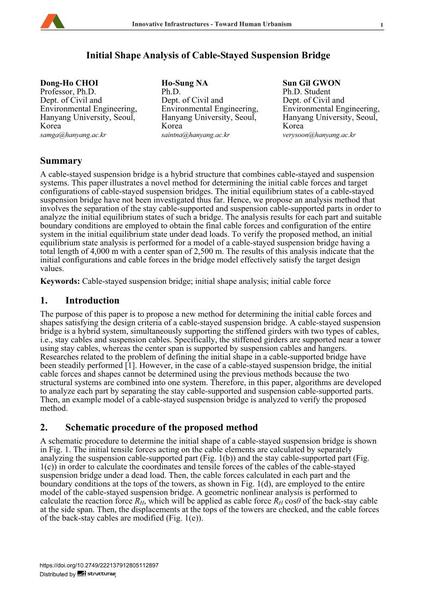Initial Shape Analysis of Cable-Stayed Suspension Bridge

|
|
|||||||||||
Bibliografische Angaben
| Autor(en): |
Dong-Ho Choi
Ho-Sung Na Sun Gil Gwon |
||||
|---|---|---|---|---|---|
| Medium: | Tagungsbeitrag | ||||
| Sprache(n): | Englisch | ||||
| Tagung: | 18th IABSE Congress: Innovative Infrastructures – Towards Human Urbanism, Seoul, Korea, 19-21 September 2012 | ||||
| Veröffentlicht in: | IABSE Congress Seoul 2012 | ||||
|
|||||
| Seite(n): | 2123-2126 | ||||
| Anzahl der Seiten (im PDF): | 4 | ||||
| DOI: | 10.2749/222137912805112897 | ||||
| Abstrakt: |
A cable-stayed suspension bridge is a hybrid structure that combines cable-stayed and suspension systems. This paper illustrates a novel method for determining the initial cable forces and target configurations of cable-stayed suspension bridges. The initial equilibrium states of a cable-stayed suspension bridge have not been investigated thus far. Hence, we propose an analysis method that involves the separation of the stay cable-supported and suspension cable-supported parts in order to analyze the initial equilibrium states of such a bridge. The analysis results for each part and suitable boundary conditions are employed to obtain the final cable forces and configuration of the entire system in the initial equilibrium state under dead loads. To verify the proposed method, an initial equilibrium state analysis is performed for a model of a cable-stayed suspension bridge having a total length of 4,000 m with a center span of 2,500 m. The results of this analysis indicate that the initial configurations and cable forces in the bridge model effectively satisfy the target design values. |
||||

